Understanding the Tomato Paste Production Line
What is a Tomato Paste Production Line?
A tomato paste production line is a sophisticated assembly of interconnected machinery and processes designed to transform fresh tomatoes into concentrated paste. It’s a marvel of culinary engineering, turning humble produce into a staple ingredient used worldwide. Imagine a seamless flow where tomatoes enter raw and emerge as rich, flavorful paste, ready for packaging and distribution. This transformation is not just about cooking; it’s about precision, hygiene, and efficiency, all rolled into one cohesive operation.
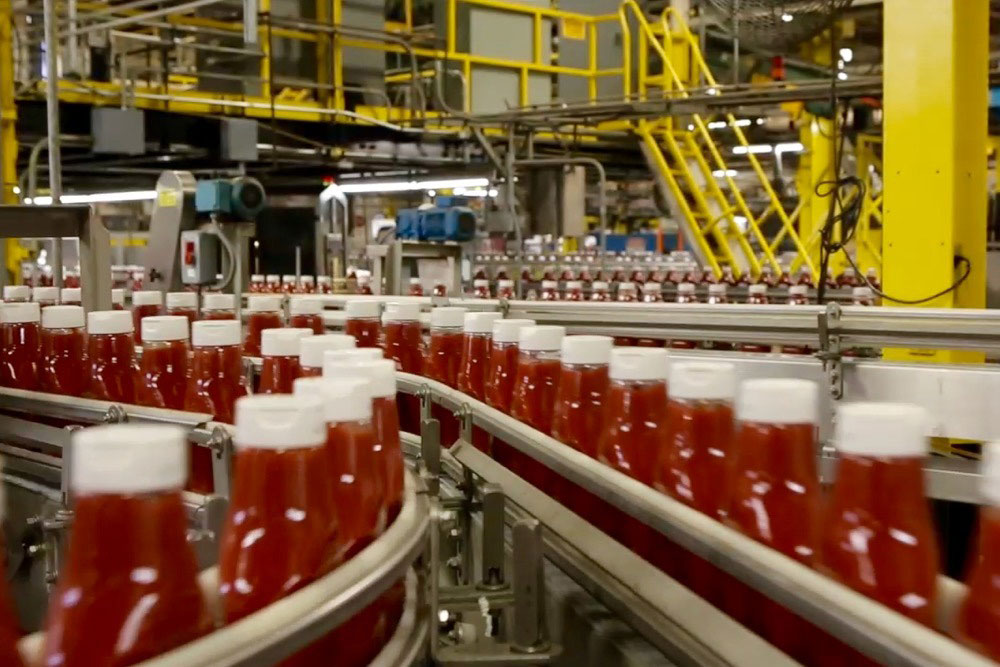
The Importance of Tomato Paste in Global Cuisine
Tomato paste is more than just a condiment; it’s a cornerstone of global gastronomy. From the sun-drenched kitchens of Italy to the bustling food markets of Asia, this viscous delight adds depth and richness to countless dishes. It’s the secret behind a robust pasta sauce, the base of a hearty soup, and the flavor enhancer in many savory recipes. Its ubiquity in cuisines across the globe underscores its versatility and indispensability. The demand for high-quality tomato paste continues to rise, making its production a vital industry in many regions.
Key Components of a Tomato Paste Production Line
A typical tomato paste production line comprises several key components, each playing a critical role in the overall process. These include harvesting and preparation units, washing and sorting machinery, crushing and pulping equipment, sieving and de-seeding apparatus, concentration systems, sterilization units, and finally, filling and sealing machines. Each component is meticulously designed to handle specific tasks, ensuring the final product meets the highest standards of quality and safety.
Exploring the Machinery Involved in Tomato Paste Production
The machinery involved in tomato paste production is as diverse as it is specialized. From robust conveyors that transport tomatoes through various stages to high-capacity evaporators that reduce water content, each piece of equipment is engineered for optimal performance. Modern production lines often incorporate cutting-edge technology, such as automated sorting systems that use optical sensors to identify and remove subpar tomatoes, and state-of-the-art sterilizers that use advanced thermal processing to ensure microbial safety.
Detailed Breakdown of the Production Process
The production process of tomato paste is a meticulously orchestrated sequence of steps, each critical to the final outcome. It begins with the careful harvesting and preparation of tomatoes, followed by rigorous washing and sorting to eliminate any contaminants. The tomatoes are then crushed and pulped to create a homogenous mixture, which undergoes sieving and de-seeding to refine the texture. The core of the process lies in concentration, where the pulp is thickened to the desired consistency. Subsequent steps include sterilization to extend shelf life and finally, filling and sealing the paste into containers for market distribution.
Harvesting and Preparing Tomatoes for Processing
The journey of tomato paste begins in the fields, where tomatoes are harvested at peak ripeness to ensure optimal flavor and nutritional content. Careful preparation is paramount; tomatoes must be handled gently to avoid bruising or damage. This initial stage sets the foundation for the entire production process, as the quality of the raw material directly impacts the final product. Advanced harvesting techniques, such as mechanical pickers with gentle handling mechanisms, are often employed to maintain the integrity of the fruit.
Washing and Sorting: The First Steps in Quality Control
Once harvested, tomatoes undergo a thorough washing process to remove dirt, debris, and any potential contaminants. This is followed by sorting, where tomatoes are evaluated for size, color, and overall quality. Advanced optical sorters can distinguish between ripe and unripe tomatoes, as well as identify and remove any defective ones. This rigorous quality control ensures that only the best tomatoes proceed to the next stage, thereby guaranteeing a superior end product.
Crushing and Pulping: Transforming Tomatoes into a Workable Consistency
After sorting, the tomatoes are fed into crushers and pulpers, which break them down into a coarse pulp. This step is crucial for creating a uniform mixture that can be easily processed further. The crushing and pulping machinery is designed to apply the right amount of force to extract the maximum juice while minimizing the formation of unwanted lumps. The resulting pulp is a thick, homogenous mass ready for sieving and concentration.
Sieving and De-seeding: Achieving the Desired Texture
To achieve the smooth, velvety texture characteristic of high-quality tomato paste, the pulp must be sieved and de-seeded. This involves passing the pulp through fine screens that separate the seeds and skin from the flesh. The sieving process can be multi-stage, with progressively finer screens to ensure a consistent texture. De-seeding is essential not only for texture but also for removing any bitter flavors that seeds might impart. The result is a refined pulp that is pure and ready for concentration.
Concentration: The Heart of Tomato Paste Production
Concentration is arguably the most critical stage in tomato paste production. Here, the water content of the pulp is reduced to achieve the desired thickness and flavor intensity. This is typically done using evaporators, which apply heat under controlled conditions to remove excess water without compromising the quality of the paste. The concentration process can be adjusted to produce paste of varying consistencies, from light to extra-rich, depending on market demands and culinary applications.
Evaporators and Their Role in Tomato Paste Concentration
Evaporators are the workhorses of the concentration process. These sophisticated machines use principles of thermodynamics to efficiently remove water from the tomato pulp. There are various types of evaporators used in tomato paste production, including thin-film evaporators and multiple-effect evaporators, each offering distinct advantages in terms of efficiency and energy consumption. The choice of evaporator often depends on the scale of production and the specific requirements of the final product.
Sterilization: Ensuring Product Safety and Longevity
Once concentrated, the tomato paste must be sterilized to eliminate any harmful microorganisms and extend its shelf life. This is typically achieved through thermal processing, where the paste is heated to a specific temperature for a predetermined time. Advanced sterilization techniques, such as high-temperature short-time (HTST) processing, ensure that the paste is safe for consumption while preserving its nutritional value and flavor. Sterilization is a non-negotiable step in ensuring the safety and quality of the final product.
Filling and Sealing: Packaging the Finished Product
The final stage in the production line is filling and sealing the sterilized tomato paste into containers. This is typically done using automated filling machines that can handle various container types, from cans to jars and pouches. The filling process must be precise to ensure the correct quantity in each container. Sealing is equally important, as it prevents contamination and preserves the paste during storage and transportation. High-speed filling and sealing systems are essential for meeting the demands of large-scale production.
The Impact of Technology on Modern Tomato Paste Production Lines
Technology has revolutionized the tomato paste production industry, making processes more efficient, consistent, and cost-effective. Modern production lines are equipped with advanced sensors, automated controls, and data analytics systems that monitor and optimize every stage of the process. These technological advancements not only enhance productivity but also ensure that the final product meets stringent quality and safety standards. The integration of smart technologies is transforming tomato paste production into a highly sophisticated and streamlined operation.
Advancements in Automation for Efficiency and Precision
Automation lies at the heart of modern tomato paste production lines. Automated systems handle tasks ranging from sorting and washing to filling and sealing, reducing the need for manual labor and minimizing human error. Robotic arms, conveyor belts, and computerized control systems work in harmony to create a seamless production flow. These advancements in automation have significantly improved efficiency, allowing for higher output with greater precision and consistency. The result is a more reliable and scalable production process.
Energy Efficiency Considerations in Tomato Paste Production
Energy consumption is a significant factor in tomato paste production, particularly during the concentration and sterilization stages. Modern production lines are increasingly focused on energy efficiency, incorporating technologies such as heat recovery systems and energy-saving evaporators. These innovations help reduce the environmental footprint of production while also lowering operational costs. Energy-efficient practices are not just environmentally responsible; they are also economically beneficial, making them a priority for forward-thinking manufacturers.
Sustainability Practices in Tomato Paste Manufacturing
Sustainability is becoming a cornerstone of tomato paste manufacturing. Companies are adopting practices that minimize waste, reduce water usage, and utilize renewable energy sources. For instance, byproducts from tomato processing, such as seeds and skin, can be repurposed for animal feed or biofuel, creating a more circular economy. Water recycling systems and solar-powered machinery are also gaining traction. These sustainability initiatives not only align with global environmental goals but also enhance the brand image of manufacturers committed to eco-friendly practices.
Factors Influencing Tomato Paste Production Line Prices
The price of a tomato paste production line is influenced by a multitude of factors. Understanding these factors is crucial for making informed purchasing decisions. Key considerations include the initial investment costs, the production capacity of the line, the quality and durability of the machinery, customization options, and the level of after-sales support offered. Additionally, market trends, geographical location, and whether the equipment is new or used all play significant roles in determining the final price.
Initial Investment Costs: What to Expect
The initial investment for a tomato paste production line can vary widely depending on the scale and complexity of the operation. High-capacity, fully automated lines with advanced features will naturally come with a higher price tag. However, it’s essential to view this investment as a long-term asset rather than an expense. A well-chosen production line can significantly boost productivity, reduce operational costs, and enhance product quality, ultimately leading to a strong return on investment. Careful financial planning and budgeting are necessary to ensure that the initial outlay aligns with your business goals.
The Role of Production Capacity in Determining Price
Production capacity is a primary determinant of the price of a tomato paste production line. Lines designed for high-volume output, capable of processing thousands of tons of tomatoes per day, will cost more than smaller, less intensive systems. The choice of production capacity should be guided by market demand, available resources, and long-term business projections. It’s a delicate balance between meeting current needs and planning for future growth. Selecting the right capacity ensures that the production line remains a viable and profitable investment over time.
Quality and Durability of Machinery: A Long-Term Investment
The quality and durability of the machinery are critical factors that influence both the upfront cost and the long-term value of a tomato paste production line. Investing in high-quality, robust equipment may require a larger initial expenditure, but it pays off in the form of reduced maintenance costs, longer operational life, and consistent performance. Inferior machinery might seem like a cost-saving measure initially, but it often leads to frequent breakdowns, higher repair expenses, and ultimately, lower productivity. Prioritizing quality ensures that the production line remains a reliable and efficient asset for years to come.
Customization Options and Their Effect on Cost
Customization options can significantly impact the price of a tomato paste production line. Many manufacturers offer the ability to tailor the line to specific production requirements, such as integrating unique processing steps or adapting to different container types. While customization enhances the functionality and efficiency of the line, it also adds to the cost. It’s important to carefully evaluate which custom features are essential and which are optional. Striking the right balance between customization and cost-effectiveness is key to acquiring a production line that meets your precise needs without overspending.
After-Sales Support and Maintenance Packages
After-sales support and maintenance packages are often overlooked but are vital considerations when purchasing a tomato paste production line. Comprehensive support, including installation assistance, operator training, and ongoing maintenance services, can add to the overall cost but provides significant value. Reliable after-sales support ensures that the production line operates smoothly, minimizing downtime and maximizing productivity. When comparing quotes, it’s wise to factor in the quality and scope of after-sales services offered, as these can greatly influence the long-term success of your investment.
Comparing Prices: New vs. Used Tomato Paste Production Lines
When budget constraints are a concern, comparing the prices of new versus used tomato paste production lines becomes a practical necessity. Used equipment can offer substantial cost savings, making it an attractive option for startups or businesses looking to expand without a hefty investment. However, used lines may come with uncertainties regarding performance, maintenance history, and remaining lifespan. Thoroughly inspecting the equipment, verifying its condition, and understanding any potential limitations are crucial steps. Ultimately, the decision between new and used should be based on a careful assessment of cost, reliability, and long-term operational needs.
Market Trends Affecting the Cost of Production Equipment
Market trends play a significant role in shaping the cost of tomato paste production equipment. Fluctuations in raw material prices, advancements in technology, and shifts in consumer demand can all influence equipment pricing. For instance, a surge in demand for sustainable and energy-efficient machinery might drive up prices temporarily. Staying informed about these trends can help you time your purchase strategically, potentially securing better deals or avoiding price hikes. Monitoring industry developments and consulting with experts can provide valuable insights into the most opportune moments to invest in production line equipment.
Geographical Location and Its Influence on Pricing
Geographical location is another factor that can affect the price of a tomato paste production line. Equipment sourced from regions with lower manufacturing costs might be more affordable, but transportation and import duties can add to the overall expense. Additionally, local market conditions, including competition and availability of suppliers, can influence pricing. It’s essential to consider the total cost of ownership, including logistics and any regional regulations that might impact the purchase and installation of the production line. Careful geographical analysis can help identify the most cost-effective sourcing options.
Obtaining Accurate Quotes for Your Tomato Paste Production Line
Obtaining accurate quotes is a critical step in the procurement process for a tomato paste production line. It’s advisable to reach out to multiple reputable suppliers and request detailed quotations that outline all components, specifications, and associated costs. Ensure that each quote is comprehensive, leaving no room for ambiguity or hidden charges. Comparing these quotes side by side allows for a clear understanding of what each supplier offers and helps in identifying the best value proposition. Accuracy in quoting is paramount to making a well-informed and cost-effective purchasing decision.
How to Request and Compare Quotes from Reputable Suppliers
Requesting and comparing quotes from reputable suppliers requires a systematic approach. Begin by identifying potential suppliers who have a proven track record in the industry. Prepare a detailed list of your production requirements and specifications to provide to each supplier. When receiving quotes, meticulously review each item, looking for consistency in pricing and quality. Pay close attention to the fine print, including warranty terms, delivery schedules, and after-sales support. Tools like spreadsheets can be invaluable for organizing and comparing quotes effectively, ensuring you select a supplier that meets your needs and budget.
Questions to Ask When Evaluating Potential Suppliers
Evaluating potential suppliers goes beyond comparing price tags; it involves assessing their reliability, expertise, and commitment to quality. Key questions to ask include: What is the supplier’s experience in the tomato paste production industry? Can they provide references or case studies from previous clients? What is their policy on warranties and after-sales support? How do they handle customization requests? Do they stay abreast of technological advancements and industry best practices? The answers to these questions can provide valuable insights into the supplier’s capabilities and help you choose a partner who will support your production goals effectively.
Hidden Costs to Consider When Budgeting for Your Production Line
Budgeting for a tomato paste production line requires accounting for more than just the sticker price of the equipment. Hidden costs can significantly impact the total investment and must be considered upfront. These may include costs for site preparation, installation, operator training, initial raw materials, and contingency funds for unexpected expenses. Additionally, ongoing operational costs such as energy consumption, maintenance, and repairs should be factored into the financial plan. A comprehensive budget that anticipates these hidden costs ensures that the project remains financially viable and avoids unpleasant surprises down the line.
Financing Options for Purchasing a Tomato Paste Production Line
Purchasing a tomato paste production line is a significant investment, and exploring financing options can make it more manageable. Various financial instruments are available, including bank loans, equipment financing, leasing arrangements, and government grants or subsidies aimed at supporting industrial growth. Each option has its own terms, interest rates, and eligibility criteria. It’s advisable to consult with financial advisors to understand the best financing route for your specific situation. Securing favorable financing can ease the initial capital burden and allow you to acquire the necessary equipment without compromising other business operations.
Navigating the Installation and Commissioning Process
Once the production line is purchased, navigating the installation and commissioning process is the next critical step. This phase involves physically setting up the machinery, integrating it into your facility, and ensuring it operates correctly. Professional installation by the supplier or experienced contractors is highly recommended to avoid errors and ensure optimal performance. Commissioning includes rigorous testing to verify that all components function as intended and that the line meets the desired production specifications. Thorough documentation of the installation and commissioning process is essential for future reference and troubleshooting.
Ensuring Your Production Line Meets Industry Standards and Regulations
Adherence to industry standards and regulations is non-negotiable in tomato paste production. Your production line must comply with local and international food safety standards, environmental regulations, and quality certifications. This includes certifications like ISO, HACCP, and GMP, which assure consumers and regulatory bodies of your product’s safety and quality. Regular audits and inspections should be conducted to ensure ongoing compliance. Investing in a production line that meets these standards from the outset not only avoids legal issues but also builds consumer trust and enhances your brand reputation.
Calculating the Return on Investment for Your Tomato Paste Production Line
Calculating the return on investment (ROI) for your tomato paste production line is essential to gauge its financial viability. ROI is determined by comparing the gains from the production line—such as increased sales, reduced costs, and improved efficiency—to the initial investment and ongoing operational costs. A positive ROI indicates that the investment is generating more value than it costs to maintain. Factors like production capacity, market demand, and operational efficiency directly influence ROI. Regularly reviewing and recalculating ROI helps in making informed decisions about scaling operations or making further investments.
Maximizing Efficiency and Minimizing Operational Costs
Maximizing efficiency and minimizing operational costs are ongoing goals in tomato paste production. This involves continuously optimizing processes, reducing waste, and improving energy usage. Implementing lean manufacturing principles can help eliminate inefficiencies and streamline operations. Regular maintenance of machinery ensures peak performance and prevents costly breakdowns. Training staff to operate equipment proficiently and safely also contributes to overall efficiency. By focusing on these areas, you can enhance productivity, reduce expenses, and ensure that your tomato paste production line remains a profitable and sustainable asset for your business.
FAQ
What is the typical lifespan of a tomato paste production line?
The lifespan of a tomato paste production line can vary significantly depending on factors such as the quality of the machinery, the intensity of use, and the level of maintenance. Generally, a well-maintained production line can last anywhere from 10 to 20 years or even longer. High-quality components and adherence to regular maintenance schedules can significantly extend the operational life of the equipment.
How much raw material is needed to produce one ton of tomato paste?
The amount of raw material needed to produce one ton of tomato paste depends on the concentration level of the paste. On average, it takes approximately 6 to 8 tons of fresh tomatoes to produce one ton of concentrated tomato paste. This ratio can vary based on the specific variety of tomatoes used and the desired consistency of the final product.
Can a tomato paste production line be customized for specific market requirements?
Yes, tomato paste production lines can be customized to meet specific market requirements. Customization options include adjusting the concentration level, modifying packaging sizes and types, and incorporating specialized processing steps. Working closely with the equipment manufacturer can help tailor the production line to your unique needs and target market preferences.
What are the main energy sources used in tomato paste production?
The main energy sources used in tomato paste production include electricity, natural gas, and steam. Electricity powers motors and automation systems, while natural gas and steam are commonly used for heating processes, particularly during concentration and sterilization. Some modern facilities are also exploring renewable energy sources such as solar power to reduce their environmental footprint.
How does the price of a tomato paste production line vary based on capacity?
The price of a tomato paste production line generally increases with capacity. Lines designed for higher production volumes, capable of processing thousands of tons of tomatoes per day, will cost more than smaller, lower-capacity systems. The cost difference reflects the larger machinery, increased automation, and higher material requirements needed to handle greater volumes efficiently.
Are there any government subsidies available for purchasing a tomato paste production line?
Yes, government subsidies and grants may be available for purchasing a tomato paste production line, particularly in regions where the government supports agricultural and food processing industries. These subsidies can help offset the initial investment costs and make it more affordable to acquire and operate a production line. It’s advisable to research local and national programs and consult with financial advisors to explore potential funding opportunities.
What kind of maintenance is required for a tomato paste production line?
Maintenance for a tomato paste production line includes regular cleaning, lubrication of moving parts, inspection of seals and gaskets, and calibration of sensors and control systems. Preventive maintenance schedules should be established to address potential issues before they lead to downtime. Additionally, periodic major overhauls may be necessary to replace worn-out components and ensure the line continues to operate at peak efficiency.
How long does it take to install and commission a tomato paste production line?
The time required to install and commission a tomato paste production line can vary depending on the complexity and scale of the line. On average, installation and commissioning can take anywhere from several weeks to several months. Factors such as the need for site preparation, the integration of new equipment with existing infrastructure, and the level of customization can all influence the timeline. Thorough planning and coordination with the equipment supplier can help streamline the process.
What are the common challenges in tomato paste production?
Common challenges in tomato paste production include ensuring a consistent supply of high-quality raw materials, managing energy consumption during concentration and sterilization, maintaining strict hygiene standards, and adapting to market demand fluctuations. Additionally, technological malfunctions, regulatory compliance issues, and labor shortages can pose challenges. Addressing these challenges requires careful planning, robust processes, and a commitment to continuous improvement.
Can a tomato paste production line be expanded in the future?
Yes, many tomato paste production lines are designed with scalability in mind, allowing for future expansion. This can involve adding additional processing units, increasing the capacity of existing machinery, or integrating new technology to boost output. When planning a production line, it’s wise to consider future growth potential and choose equipment that can be easily upgraded or expanded as your business evolves.
What are the environmental impacts of tomato paste production?
The environmental impacts of tomato paste production include water usage, energy consumption, and the generation of byproducts such as tomato seeds and skin. Modern production lines are increasingly adopting sustainable practices to mitigate these impacts, such as water recycling systems, energy-efficient machinery, and repurposing byproducts for animal feed or biofuel. Regulatory requirements also play a significant role in minimizing environmental footprints, with many countries imposing strict limits on emissions and waste disposal.
How does the price of a tomato paste production line compare to other food processing lines?
The price of a tomato paste production line can vary widely depending on the scale and complexity of the operation, but generally, it falls within a similar range as other food processing lines of comparable capacity. Factors such as the need for concentration and sterilization, which are specific to tomato paste production, can influence the cost. However, the overall investment is comparable to other food processing lines, with the specific requirements of each industry dictating the final price.
What is the typical lead time for ordering a custom tomato paste production line?
The lead time for ordering a custom tomato paste production line can range from several months to over a year, depending on the complexity of the customization, the availability of components, and the workload of the manufacturer. Custom lines often require specialized design and fabrication, which can extend the production timeline. It’s advisable to engage with the supplier early in the planning process to establish a realistic timeline and ensure that the line is delivered according to your schedule.
How can I ensure the quality of the tomato paste produced by my production line?
Ensuring the quality of tomato paste produced by your production line involves implementing rigorous quality control measures at every stage of the process. This includes sourcing high-quality raw materials, maintaining strict hygiene standards, calibrating machinery regularly, and conducting frequent taste tests and laboratory analyses. Additionally, investing in advanced monitoring systems and training staff to identify and address quality issues promptly can help maintain consistent product excellence.
What are the latest technological advancements in tomato paste production?
The latest technological advancements in tomato paste production include the integration of IoT (Internet of Things) systems for real-time monitoring and control, the use of AI and machine learning for predictive maintenance and process optimization, and the adoption of energy-efficient evaporators and sterilizers. Innovations in automation, such as robotic sorting and packaging systems, are also enhancing efficiency and reducing human error. These advancements are driving the industry towards more sustainable, cost-effective, and high-quality production methods.
Must-Read Blogs For Chain Restaurants Owner

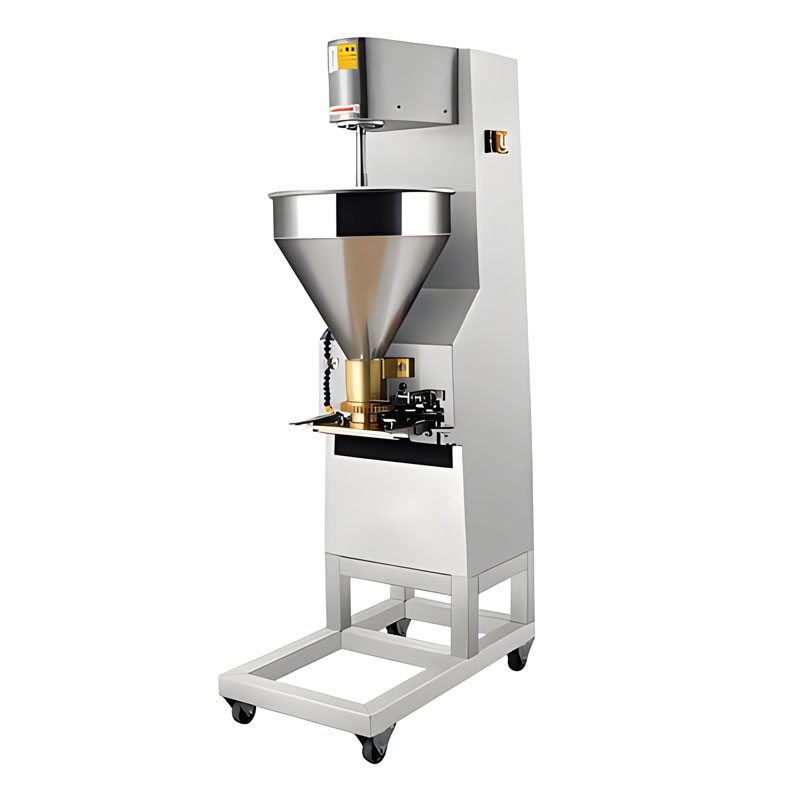

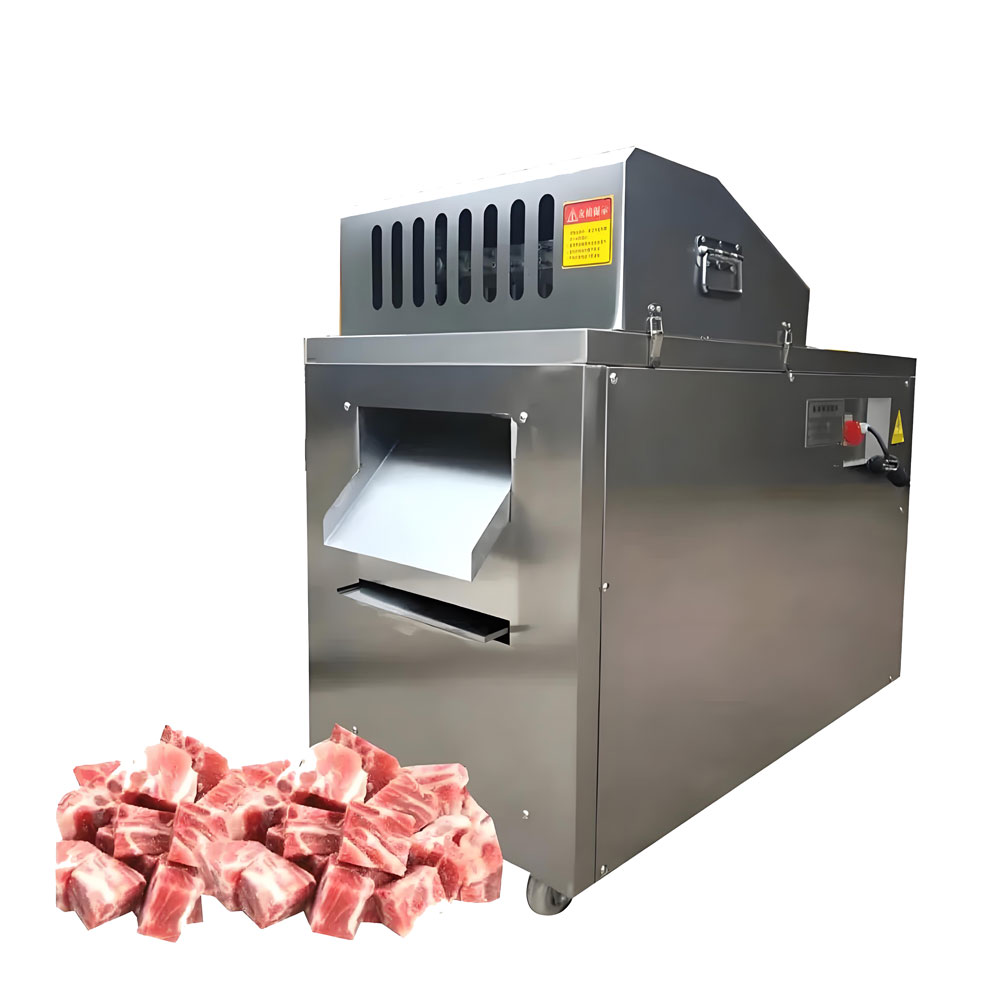
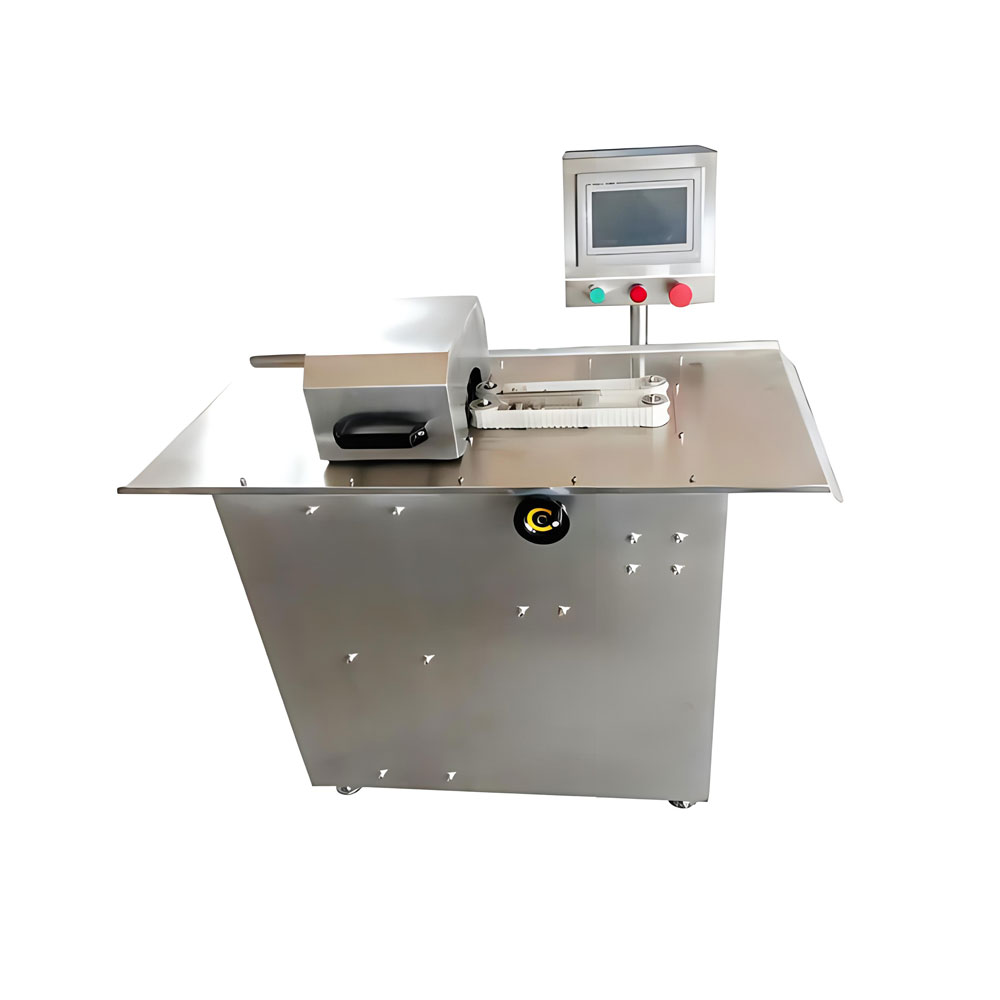
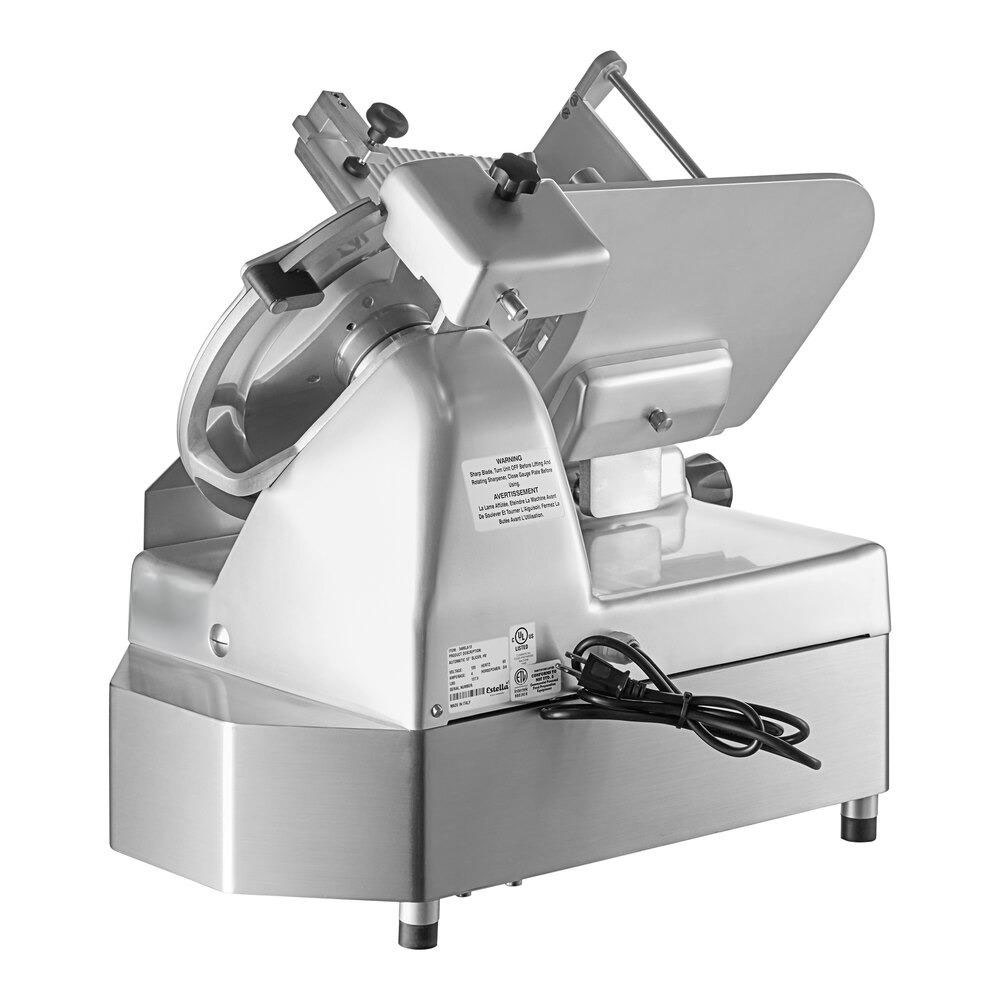
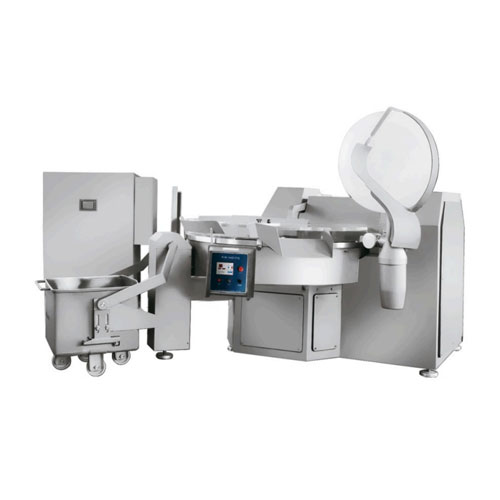

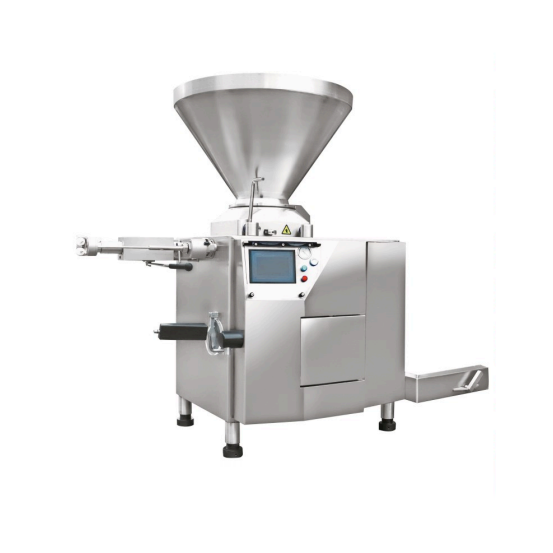
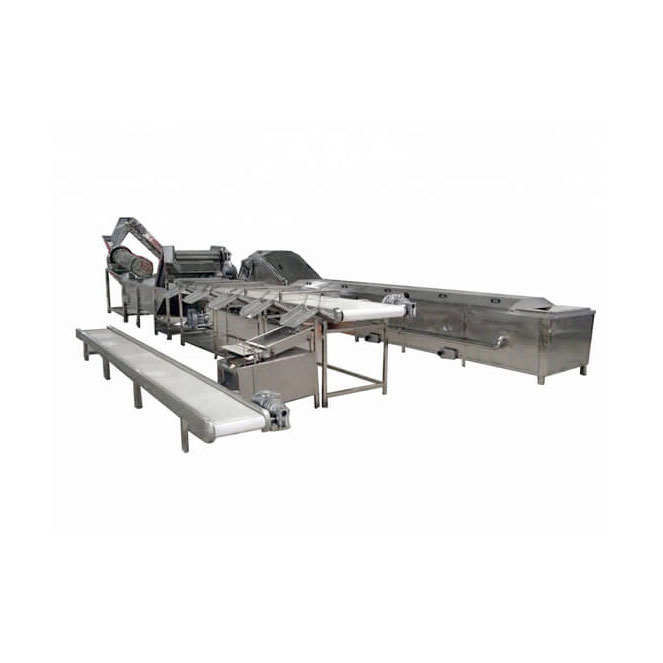
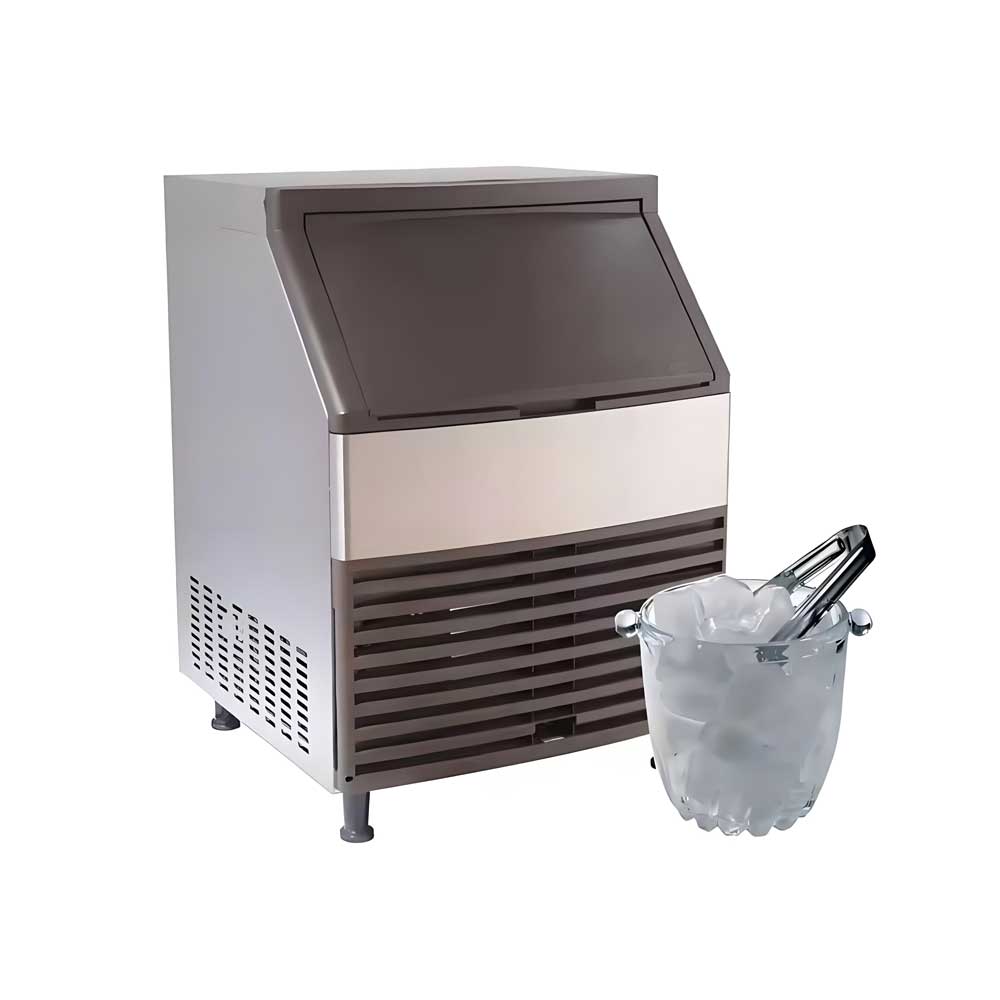
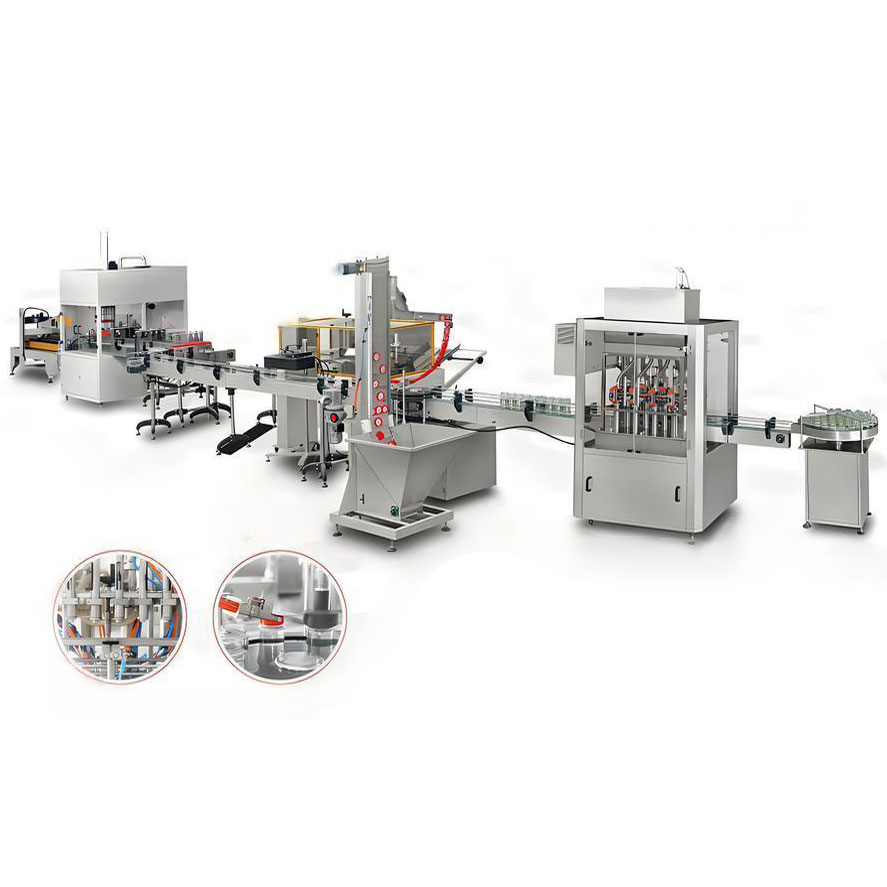 Tomato Paste Production Line
Tomato Paste Production Line Portable Flake Ice Machine
Portable Flake Ice Machine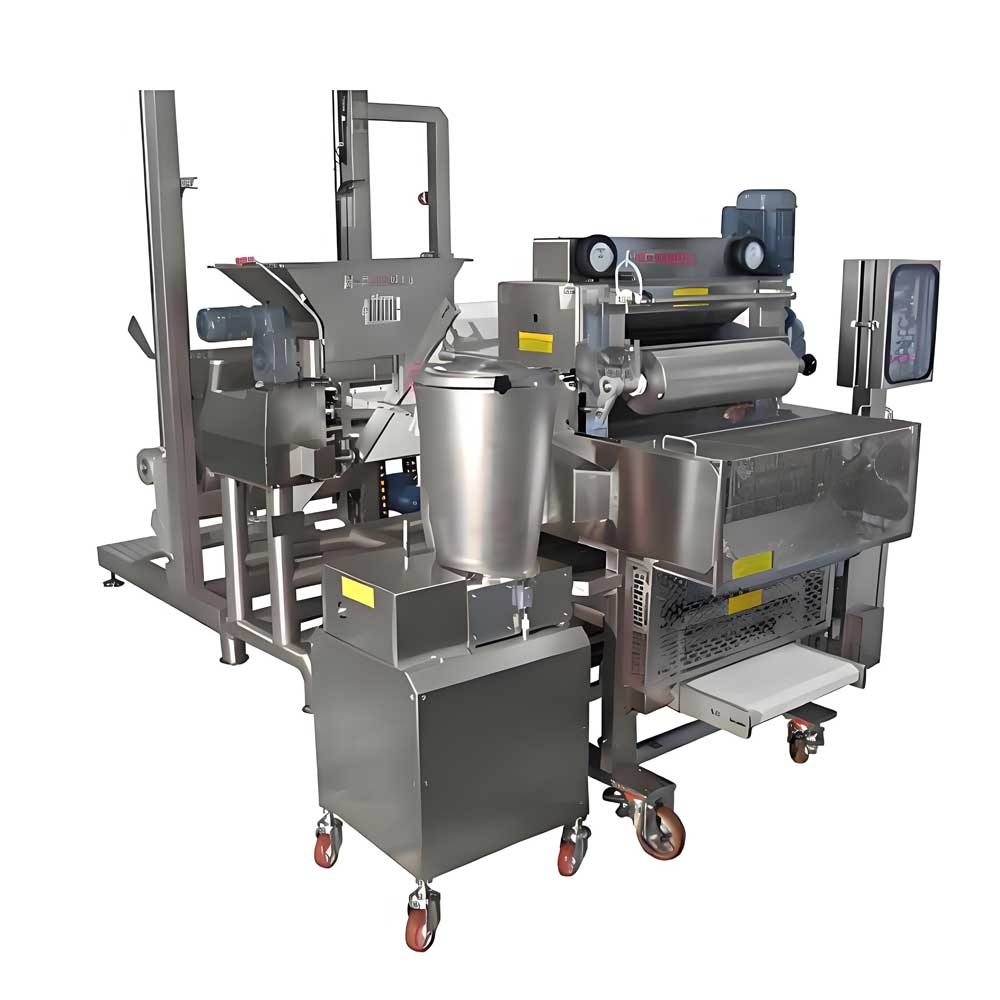 Pelmeni Making Machine
Pelmeni Making Machine
Ready to Get Started?